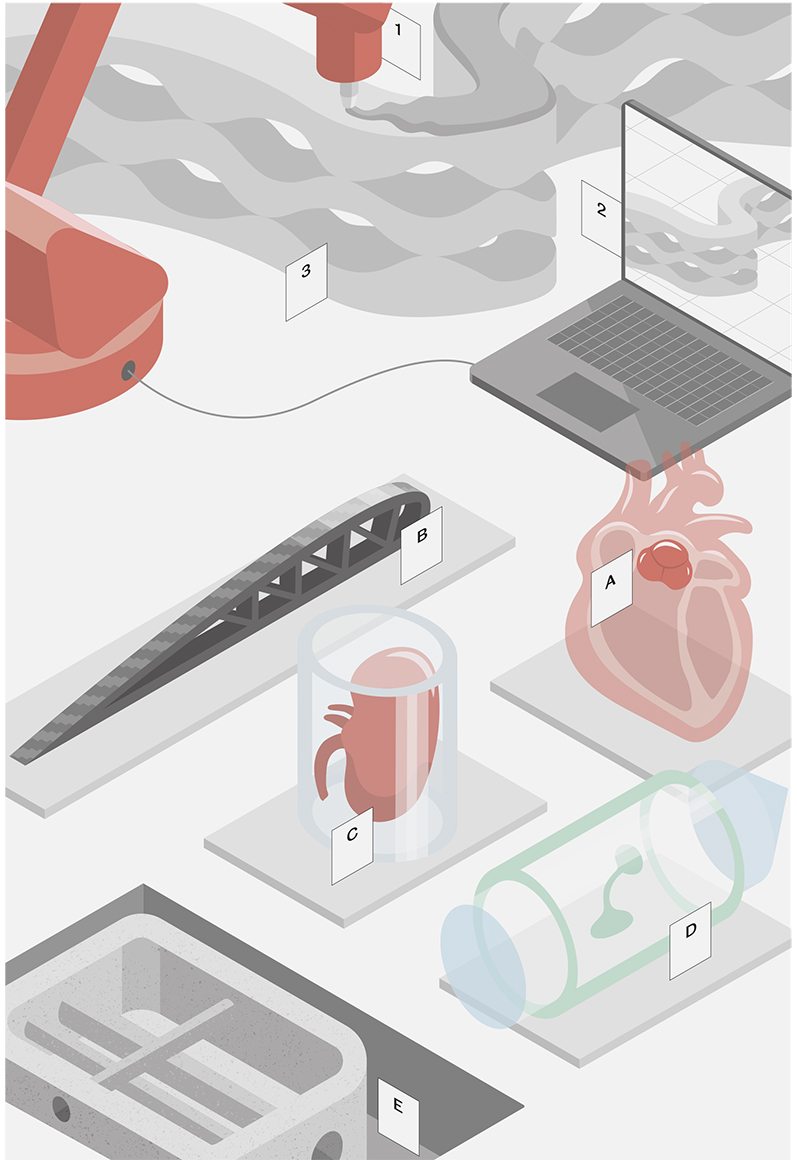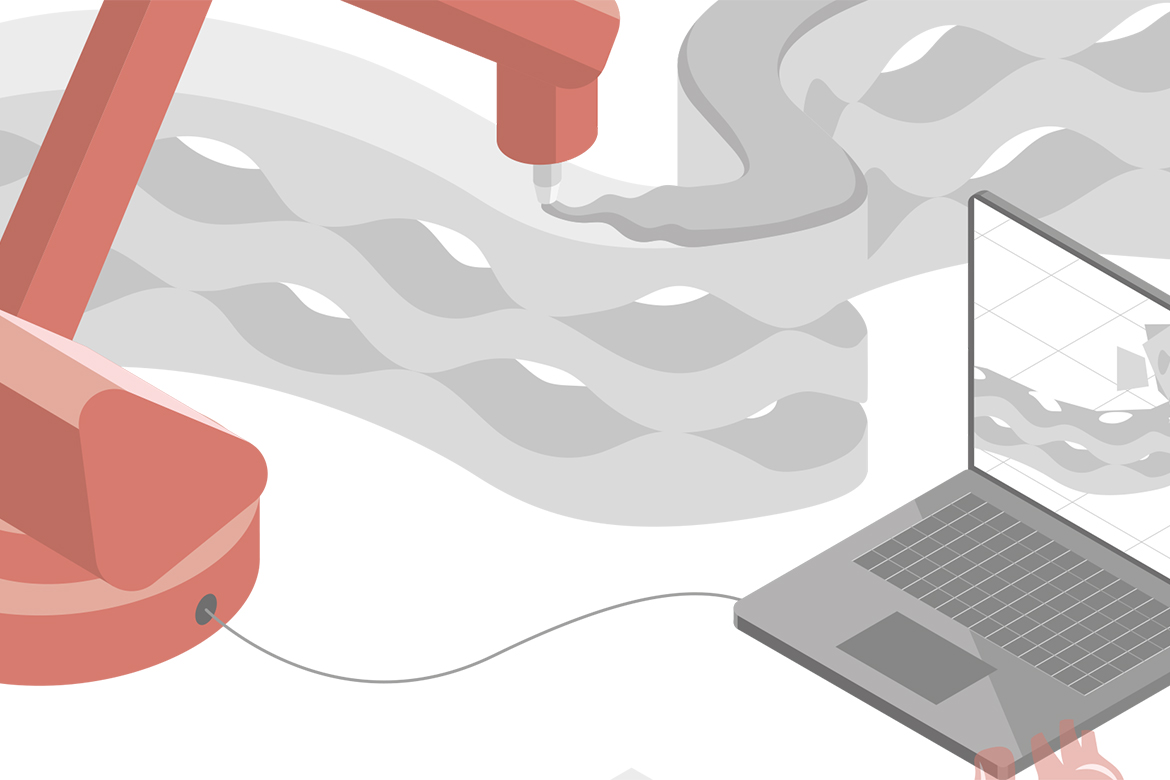How it works
This 3D printer is also a bricklayer
Concrete, carbon, silicone, glass and body tissue: additive manufacturing can be used to produce more and more materials. Swiss start-ups are right at the forefront.
Concrete, carbon, silicone, glass and body tissue: additive manufacturing can be used to produce more and more materials. Swiss start-ups are right at the forefront.


Silicone: This flexible, resistant, biocompatible material is ideally suited for making prostheses – and perhaps one day even artificial heart valves. A doctoral student has developed a chemical additive that means highly viscous silicone can be applied in thin layers of ten micrometres each. Spectroblast, an ETH Zurich spin-off.
Carbon: Creating a composite of polyamide and carbon fibres is a costly, complicated process. But three graduates have figured out how to use two injectors to produce affordable, featherweight carbon structures that are as hard as steel. 9T Labs, Spin-off, ETH Zurich.
Creating artificial body tissue
A gel can be used to shape cells into the right form. Regenhu, a start-up from Fribourg.
Glass: A laser can shape 3D glass parts for optics, electronics and mechanical systems by etching them out with chemicals. A miniaturised, flexible glass point can be used to measure flow velocities, for example. Femtoprint, a spin-off company from a European research project, Lugano.
Concrete: A complicated connecting piece for a power cable or a water pipe can be manufactured in a single day instead of five. Mobbot, Start-up, Fribourg.
No waste, quick processing, diverse forms
In 3D printing, one layer after another is added from the bottom up. Unlike drilling or milling, no raw material is removed, so nothing is wasted. There is less waste, and material costs can be kept low.
No waste, quick processing, diverse forms
All kinds of prototypes can be designed quickly at a computer, produced swiftly and tested immediately. There is no need for moulds or production lines, which saves time and money when production numbers are small.
No waste, quick processing, diverse forms
The additive process means that the craziest geometries can be created.
Illustration: ikonaut
